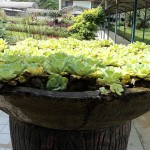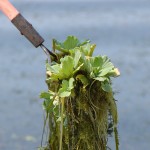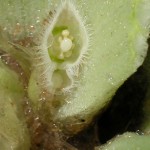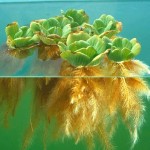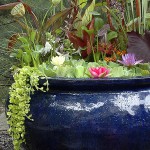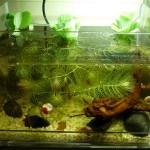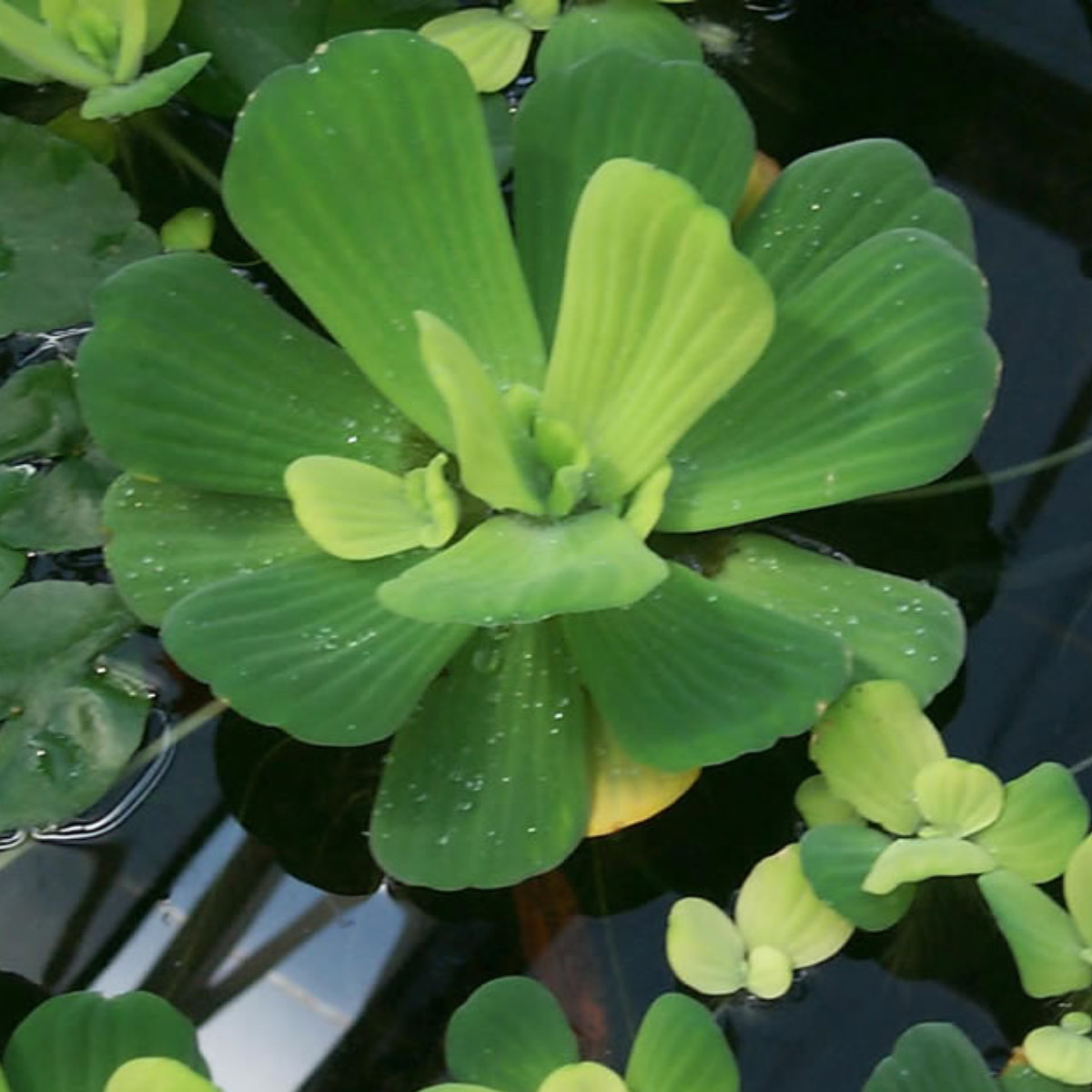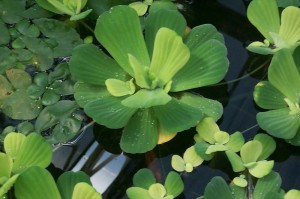Family: Araceae
Synonymous: Apiospermum obcordatum
Limnonesis commutata
Limnonesis friedrichsthaliana
Pistia aegyptiaca
Pistia aethiopica
Pistia africana
Pistia amazonica
Pistia brasiliensis
Pistia commutata
Pistia crispata
Pistia cumingii
Pistia gardneri
Pistia horkeliana
Pistia leprieuri
Pistia linguiformis
Pistia minor
Pistia natalensis
Pistia obcordata
Pistia occidentalis
Pistia schleideniana
Pistia spathulata
Pistia texensis
Pistia turpinii
Pistia weigeltiana
Zala asiatica
Distribution and habitat: Pistia stratiotes native distribution is uncertain, but probably pantropical; it was first discovered from the Nile near Lake Victoria in Africa. It is now present, either naturally or through human introduction, in nearly all tropical and subtropical fresh waterways. The growth habit can make it a weed in waterways. It has the potential to reduce the biodiversity of a waterway. Mats of Pistia stratiotes block gas exchange at the air-water interface, reducing the oxygen in the water and killing fish. They also block light, killing native submerged plants and alter immersed plant communities by crushing them.
Pistia stratiotes to survive, it requires a wet, temperate habitat. It is usually on the surface of slow-moving rivers, ponds and swamps.
Description: Pistia stratiotes is a perennial monocotyledon with thick, soft leaves (with velvet like feel when touched) that form a rosette. It floats on the surface of the water, its roots hanging submersed beneath floating leaves. The leaves can be up to 14 cm (5.5 inch) long and have no stem. They are light green, with parallel veins, wavy margins and are covered in short hairs which form basket-like structures which trap air bubbles, increasing the plant's buoyancy. The flowers are dioecious and are hidden in the middle of the plant amongst the leaves. Small green berries form after successful fertilization. The plant can also undergo asexual reproduction. Mother and daughter plants are connected by a short stolon, forming dense mats.
Pistia usually reaches 5-6 cm (2-2.5 inch) in diameter in aquariums, but in fish ponds it can grow up to 60+ cm (23+ inch).
Care: In Europe it can also be used as a summer plant in garden ponds, but in the tropics it is regarded as a serious weed. This plant is fast growing, often described as an aquatic weed and is invasive if given the chance. Never allow it to cover the entire water surface in aquarium as it will reduce the gaseous exchange dramatically, starving the fish of oxygen plus it will diffuse too much light from the submerged plants below the water. If keeping this plant, always dispose on it properly when thinning out, never throw it in the local waterways but place the plants in a refuse bin.
Pistia stratiotes starts out slow - particularly during cool spring days. Warm sun makes it grow like gangbusters. Any weather approaching frost destroys it. Once it dies, rake it out of the pond before it rots.
Where not hardy,Pistia stratiotes can be lifted from a pond or water container before the first frost and overwintered in sunny spot and water that remains at least 10C (50F). If kept outdoors in cold climates, Pistia stratiotes are easily over-wintered by removing to an indoor pool or aquarium during colder months and hibernating them in moist sand and peat.
If kept in aquarium, it should be either open-topped or have good ventilation with lower water level to offer living space for plants, otherwise the leaves of Pistia stratiotes will become dried and damaged.
Water: Keep the water current at slow rate during introduction, but once established, the filter can be turned to its maximum speed. Outdoors, it will easily grown on still water in full sun to part shade.
This plant prefers slightly acidic waters (6.5-7.2) and moderate hardness (5-20 KH).
Substrate: This is a floating plant and should never be planted in the substrate. If Pistia stratiotes starter plants have a good root system, just toss them in the water. Otherwise, prop them up and they will root.
Light: Outdoors, Pistia stratiotes thrives in full sun, but needs some midday shade. Indoors, they will need a bright lit position; a south window is best, but artificial lighting may still be necessary. A typical 10-12 hours light cycle suits this plant.
Most starter Pistia stratiotes plants were grown under partial shade (in slat houses), so is recommended to protect them from full sun for a week or two. Full sun will not kill them, but it can bleach tender young leaves. If the plants come from full sun, skip this step.
Pistia stratiotes grows faster in full sun. Their rosettes stay tighter looking better when grown in partial shade. Either way, Pistia stratiotes provides good cover for ponds.
Temperature: Water temperature should be between: 20 - 28C (68 - 82F). The water temperature should never drop bellow 10C (50F) for Pistia stratiotes safety.
Feeding: Pistia stratiotes is such a vigorous grower it sometimes uses up one or more nutrients in the pond. This can especially be a problem in very small ponds and ponds with very few fish. There are two ways of fertilizing this plant. If there are only a few, float them in a bucket of liquid fertiliser for a few hours at a time. If there are too many lettuce to remove from the pond, treat the entire pond with a solution of Muriate of Potash. This plant and other floating plants also usually respond well to any of the micro nutrient solutions specially made for pond plants.
Availability in cold climate: Seasonally, this plants are offered in spring to early summer grown from seed or green-house grown runners for use in garden ponds.
Propagation: Pistia stratiotes spreads both by vegetative reproduction and by seeds. It is easy to propagate by using runners. Pistia stratiotes grows tiny daughter plants off to the side. A network of smaller Pistia stratiotes will grow surrounding the starter plants. These new plants can be pinched off or allowed to detach on their own.
They also reproduce by seeds that come from some nearly invisible flowers.
Problems:Pistia stratiotes is generally care free, but there are a few reasons it may not thrive.
Fish love to nibble at the roots and if they are large or there are a lot of them, they may kill the plant or even eat the entire thing.
Placing the lettuce in floating baskets or partitioning them off from the fish with rocks may help.
Pistia stratiotes loves to be crowded and even though they are floating plants, they do not like to drift around.
Corralling them with a hoop of plastic tubing, a hula-hoop, fishing line or even rocks will keep them from moving around. Also it does not like to have water on its leaves.
Lack of nutrients will cause water lettuce to grow poorly and turn yellow.
Consider to fertilise the Pistia stratiotes.
Starter Pistia stratiotes plants have no roots.
Float the plants in a shade spot and they usually grow new roots very quickly. Adding a little fish emulsion to the water (but not in the pond or aquarium) may help, too.
Dry, curling ends of leaves are typically due to low water vapor. Also it is badly affected by drops of water formed by condensation on the lid of the tank.
Recommended varieties:
Pistia stratiotes 'Ruffles' has more wavy leaves and doesnt grow as large as the other varieties. It is perfect for small container ponds.
Pistia stratiotes 'Jurassic' is a large form that can grow to be the size of a dinner plate. It doesnt seem to grow as fast as the common variety.
Pistia stratiotes 'Splash' is a variegated form that stays smaller.
Growth depends upon conditions. The so-called 'Dwarf' Pistia stratiotes is not a distinct species but simply due to less-than-ideal conditions of light and nutrients.
Companion plants: Pistia may be cultivated with other floating plants like Ceratopteris, Salvinia, Lemna.
Uses: Pistia stratiotes has often been grown as an ornamental in lakes, ponds, aquaria and water gardens. It is often used in tropical aquariums to provide cover for fry and small fish. Its waxy leaves are very ornamental floating in ponds, water gardens, containers at poolside and aquariums. It is a free floating aquatic perennial for water gardens or ponds.
Apart from being an ornamental plant, its attractive foliage inhibit the growth of algae and helps keep water clear.
It is a magnificent floating plant that is best suited to an outdoor pond or large aquarium.
Aquarium summary:
Height in aquariums: 5 cm - 20 cm
Width in aquariums: 5 cm - 20 cm
Growth rate: fast growing
Difficulty: medium
Placement: floating plant
Lighting needs: bright
Substrate: not needed
Temperature: 20 to 28C (68-82F)
pH: 6.5-7.2
Water hardness: 4-12GH ?
Width outdoor: 60cm+
Hardiness zone: 9-11
